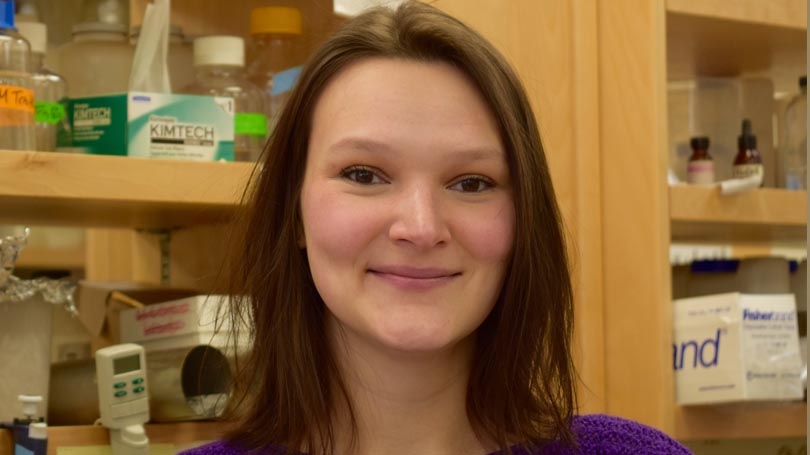
Caitlyn Hauke, a PhD candidate in Microbiology and Immunology, was a recipient of the Graduate Alumni Research Award
Cholera is an acute diarrheal disease caused by the ingestion of food or water contaminated with the aquatic, Gram-negative bacterium Vibrio cholerae. Every year, the World Health Organization estimates 3-5 million cases and 100,000-120,000 deaths occur worldwide. Although infection is treatable with rehydration therapy, the explosive nature of outbreaks makes it difficult to treat infected patients quickly and efficiently. Effective control measures rely on prevention and preparedness, including the use of cholera vaccines.
Currently, there are two oral cholera vaccines licensed and in use as a method for cholera prevention. However, these two-dose oral, killed (inactivated) whole cell vaccines (Dukoral and Shanchol) offer incomplete protection for a limited time in adults, and are less protective in children. My project in the Taylor lab is to develop an improved killed (bacteria are inactivated using high heat), whole cell cholera vaccine by including the cholera antigen known as toxin co-regulated pilus (TCP), which is absent in current vaccine formulations. TCP is a colonization factor that facilitates attachment to the small intestine and is required for infection. TCP is known to trigger an immune response. It is also a protective antigen in a mouse cholera model. We expect the inclusion of TCP in a cholera vaccine to offer more complete protection in children. With the additional protective antigen, the new vaccine formulation could offer longer, more effective protection in adults as well.
My final vaccine formulation is comprised of two V. cholerae O1 El Tor variant biotype clinical strains that contain deletions of the cholera toxin genes. A rhamnose-inducible promoter controls expression of the tcp operon, so that the addition of 0.1% rhamnose to the growth medium produces TCP. These adjustments to the clinical isolate strains will allow for simplified preparation of the cholera vaccine, and more importantly, will permit the production and inclusion of TCP in the vaccine.
After testing the vaccine strains and pilus for their integrity after prolonged exposure to heat or acidic conditions, as well as in scaled-up growth volumes, the next step was to determine whether the inclusion of TCP in the vaccine elicited an immune response in an animal model. The support of the Dartmouth Graduate Studies Graduate Alumni Research Award made this final experiment possible. A preparation of the heat-killed vaccine strains was provided to an outside facility for injection into rabbits. The rabbit serum was later harvested and returned to our lab where we determined that TCP-specific antibodies were produced in these animals. The serum was then used to test passive immunization in the infant mouse cholera model, where we concluded that the vaccine strains were protective against cholera disease development. While our preliminary results are promising, a collaborator at another university is currently conducting further research into the potential efficacy of this vaccine.
To date, no killed, whole cell cholera vaccines have included TCP colonization antigen. We have constructed a vaccine formulation that produces high levels of stable TCP antigen upon being scaled up, which has not previously been achieved. Ultimately, the inclusion of TCP should result in a formulation that can be more efficacious in young children and perhaps in adults as well.